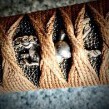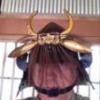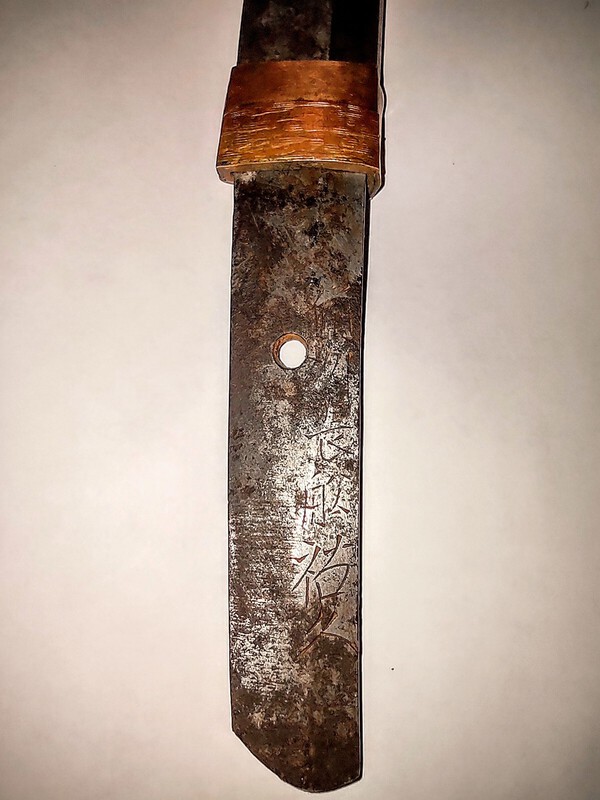Good morning,
Thank you, glad to be here.
I regret that I could not be involved with the care of this blade, from the time it left Japan (I would not be born until a few decades later) I assure you, however, that I had absolutely nothing to do with cleaning the nakago. I'm a complete newbie, but at least I know better than that. 🙂
Unfortunately, the sword was abused a bit. It's edge is chipped, and there is also ample rust all along the full length of the blade. The koshirae is all there (or at least mostly there) but is in very poor condition. Kashira is horn, with gold shitodome, and fuchi is copper. White samegawa (maybe originally applied in pieces, or has broken into separate sections over the years) is wrapped in ito I can't identify with certainly, but maybe cotton (?). The menuki are bronze, and I am not certain what they are representing. The tsuba is iron, and relatively plain. It has had copper shims(?) applied, so maybe was originally on a different blade? It's just a basic round tsuba, with very limited engraving. The saya was lacquered with splintered bamboo and tiny chips of shell/pearl added. The saya is missing the koiguchi, and the kurigata. The saya's glue let go some time ago and it's in two separate pieces now. It appears as if it was inlet for a secondary blade, on the ura side, but I never even saw that and it's long gone now either way.
My father recalled it being in pristine condition. Apparently, it was a beautiful sword when he first saw it as a small child.
I am completely out of my depth, but I would be greatly fulfilled if I were able to see it restored to it's former glory. I believe a logical first step is to attempt to find out what it is I'm working with. I sincerely appreciate the time and effort that you have put into helping me with this critical aspect of the process.
My most humble and heartfelt thanks.
Have a great day









